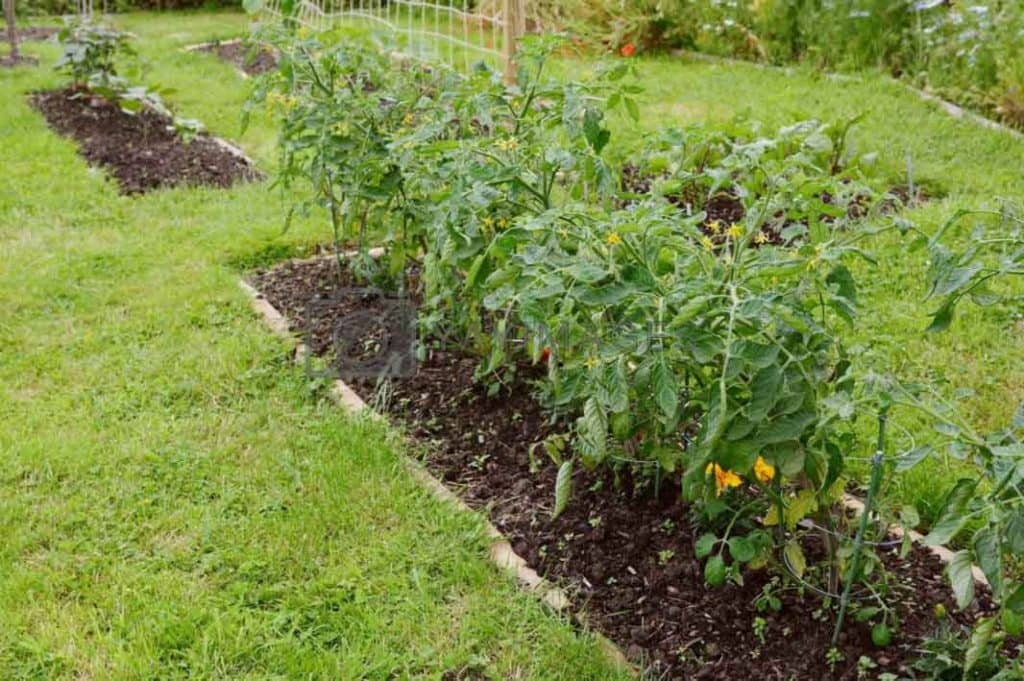
Epsom salt helps restore the levels of micronutrients in the soil. This will result in pushing the growth of your plants, improving the flavor of the tomatoes, and better tomato yields.
In this guide, you will learn the benefits of using Epsom salt for tomatoes and many other relevant things that you should know while using Epsom salt for tomato plants.
Epsom Salt Benefits
1. No More Yellow Leaves
And if your plants lack magnesium, they could be suffering from chlorosis and, as a result, are unable to produce enough chlorophyll. This turns your plant’s leaves yellow.
A quick fix is to add magnesium. As Epsom salt contains magnesium as its main component, using it immediately can help improve the condition of your tomato plants.
2. Better Flavor
From Epsom salt, you will get two vital micronutrients to feed your plants.
Magnesium will help your plants in photosynthesis, so your plants will be able to collect more food directly from the sun.
And the sulfur will help produce protein and enzymes.
Epsom salt will ensure both of these benefits for your tomato plants.
3. Growth Improvement
Epsom salt benefits tomato plants in many ways, and improving their growth is one of them. If you can ensure proper nutrients, you will likely get a better tomato yield. And the vital nutrients that your plants need include magnesium.
It plays a vital role in photosynthesis because you can’t think of chlorophyll production without magnesium.
How Do You Use Epsom Salt on Tomato Plants?
- Prepare the soil: Loosen the soil around the planting area and mix in some organic matter, such as compost or well-rotted manure, to help improve soil quality and drainage.
- Add Epsom salt: Sprinkle 1 tablespoon of Epsom salt in the planting hole, and cover it with a thin layer of soil. This will help the plant absorb the Epsom salt as it grows.
- Plant the tomato: Place the tomato plant in the hole and gently pack soil around the base of the plant to provide support.
- Water the plant: After planting, water the tomato plant thoroughly to help settle the soil around the roots.
How Often Should I Put Epsom Salt on My Tomato Plants?
Use Epsom salt in moderation because excessive use causes a buildup of minerals in the soil.
- A general guideline for applying Epsom salt to tomato plants is to use 1 tablespoon of Epsom salt per gallon of water and apply it to the plant’s base every two to three weeks during the growing season.
- This can help improve the plant’s growth, fruit production, and overall health.
Negative Effects of Using Too Much Epson Salt on Tomatoes
Applying too much Epsom salt to tomato plants will harm them and negatively affect their growth and development.
- Epsom salt contains magnesium and sulfate, which can contribute to the buildup of these minerals in the soil if used excessively. This can lead to soil imbalances and may interfere with the plant’s ability to absorb other essential nutrients.
- Epsom salt can cause leaf burn if applied in high concentrations or if the plants are exposed to sunlight after application. This can cause the leaves to turn yellow or brown and eventually die.
- Too much Epsom salt can also cause reduced growth in tomato plants. The excess minerals interfere with the plant’s ability to absorb other essential nutrients, leading to stunted growth and smaller yields.
Final Thoughts
Epsom salt can be a beneficial supplement for tomato plants due to its magnesium and sulfate content. When used in moderation, it can help improve plant growth, fruit production, and overall health.
However, excessive use of Epsom salt can cause mineral buildup, leaf burn, and reduced growth in tomato plants. Therefore, it’s important to use Epsom salt in moderation and not rely solely on it as a fertilizer. A well-balanced fertilizer program is essential for providing all the necessary nutrients for healthy tomato plant growth.
